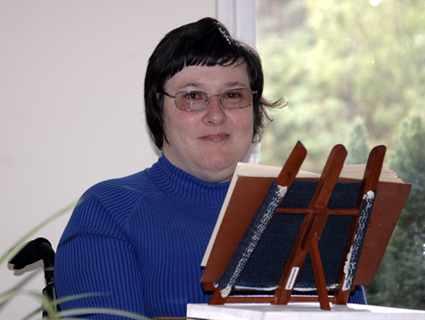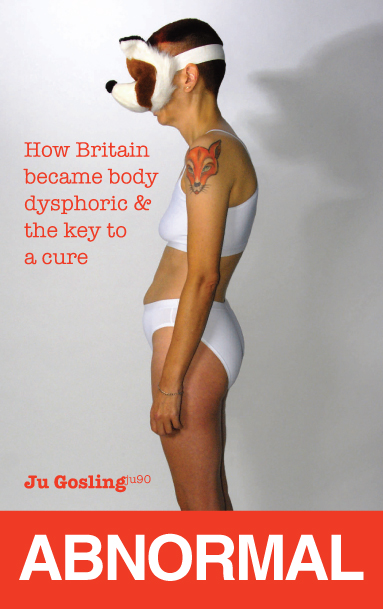| Bettany Press The home of 20th century girls' fiction on the web |
 |
|
|
 |
Have you always been a book lover/collector?
As a child I was an avid reader. I cannot remember a time when I couldn’t read, and I still catch myself reading anything within eyesight range with words on it, even if it is upside down! Although some ‘classic’ childrens’ writers did not appeal to me at all, I read and re-read other books till they began to fall apart.
In the early 1970s my mother bought me three of the first paperback titles of the ‘Chalet School’ series, and I was hooked! I scoured the shelves of W.H. Smith’s for the next ten years or so hunting for new titles, as the paperbacks were being reprinted in a frustratingly random order.
At that point I would not have described myself as being anything but an avid reader of Elinor M. Brent-Dyer’s school stories, but that began to change to being a collector when I was at university in the 1980s. During my second year, I stumbled on a second-hand bookshop in one of the back lanes of Colchester. In a box outside were two dilapidated hardback titles – both duplicating ones in my paperback collection – for 50p each. I bought them and discovered that the paperback text had been amended in a few places, thus slightly changing the focus of the story.
I started chatting to the owner of the shop, Michael, and expressed my irritation over the random selection of titles being printed in paperback. I suspect that Michael was taken by the challenge of finding more titles for me, because over the next few years I began accumulating more and more hardbacks (with dust-wrappers) typically for between £2 and £5: prices that today’s collectors can only fantasise over.
When did you first start to look seriously for children's books with disabled characters in them and begin to build up a collection? When did you become interested in these books from a critical perspective?
Being an uncritical child reader, it was only in adulthood that I began to realise why I disliked Coolidge’s Cousin Helen or why I had been puzzled over the fuss that Spyri’s Clara engendered when she began walking. I had, and still do, read the books focussing on the characters rather than on any impairment portrayed within them. And although on a subconscious level I may have appreciated Barbara Willard’s unsentimental representations of individuals with learning difficulties or those who were behaviourally or physically challenged, I certainly did not read her “Mantlemass” series seeking realistic portrayals.
It was only when I began interacting with other children’s book collectors shortly after discovering Dorita Fairlie Bruce’s disabled character Winifred Arrowsmith in 1994 that I began to look seriously for disabled characters in children’s books. I now own a small collection of books where the protagonist or a key supporting character is a disabled person, and about the same number of sci-fi or fantasy books where impairment is at the centre of the characterisation of the protagonists or main supporting characters. Unfortunately, all of the children’s books in my collection are only available second-hand, if at all.
When did you first come up with the idea for Unseen Childhoods? Was this before or after you started to collect the books?
The genesis of Unseen Childhoods dates back to my discovery of Winifred Arrowsmith, when I began to explore literature aimed at girls to look for other realistic images of disability and impairment. It became clear that any resulting book would straddle three distinct disciplines: Women’s Studies, Children’s Studies and Disability Studies. As my own reading continued I became more and more sure that I had a truly unique book, and after further research it became very clear to me that I was not going to do this triple threaded subject justice on my own; there was just so much material to cover.
Who are the contributors to the book? How did you find them? What is their background, and where do they come from?
In 2003 I advertised on the English Department of the University of Pensylvania’s email list, inviting other disabled women to contribute to the book. Their remit was to examine the way that disability is shown and used in children's fiction. I had many expressions of initial interest, but these finally resulted in my commissioning four women from the United States and four from the United Kingdom.
Each writer selected books that would fit the specifications of the book’s structure, and despite being written in isolation the essays slotted well together. Each essay writer brings their own perspectives to a greater or lesser extent, and reflects their own image of themselves. The Social Model of Disability is used throughout the book, as this is crucial if the characters were to be treated holistically rather than being a rag-bag of symptoms.
What are your overall
conclusions in the book?
It was disturbing to discover that there are so few books being published
at the turn of the twenty-first century which have disabled characters
in at all, and that of those, only a tiny number met the criteria of
having believable characterisation. In fact, the books published since
1990 are in many ways weaker than their early twentieth-century counterparts,
relying on stock ‘cardboard’ characters.
Another really worrying aspect of late twentieth-century/early twenty-first century fiction for children is the speed at which books go out of print. This means that when a memorable book is printed it is only accessible for a narrow age-group before it ceases to be published, thus denying other children the ability to see a positive portrayal of disability.
However, perhaps the saddest thing in terms of the inclusion of believable disabled characters is that the most popular children’s authors, such as JK Rowling, did not include disabled characters at all.
As a disabled person, what do you think about the lack of strong and positive disabled characters in children's books today? What do you think needs to be done to change things?
Only when there are truly believable characters in fiction, both for adults and children, will those of us who function in bodies that work differently be completely members of society on an equal footing with everyone else, as fiction is only a reflection of the society that spawned it.
